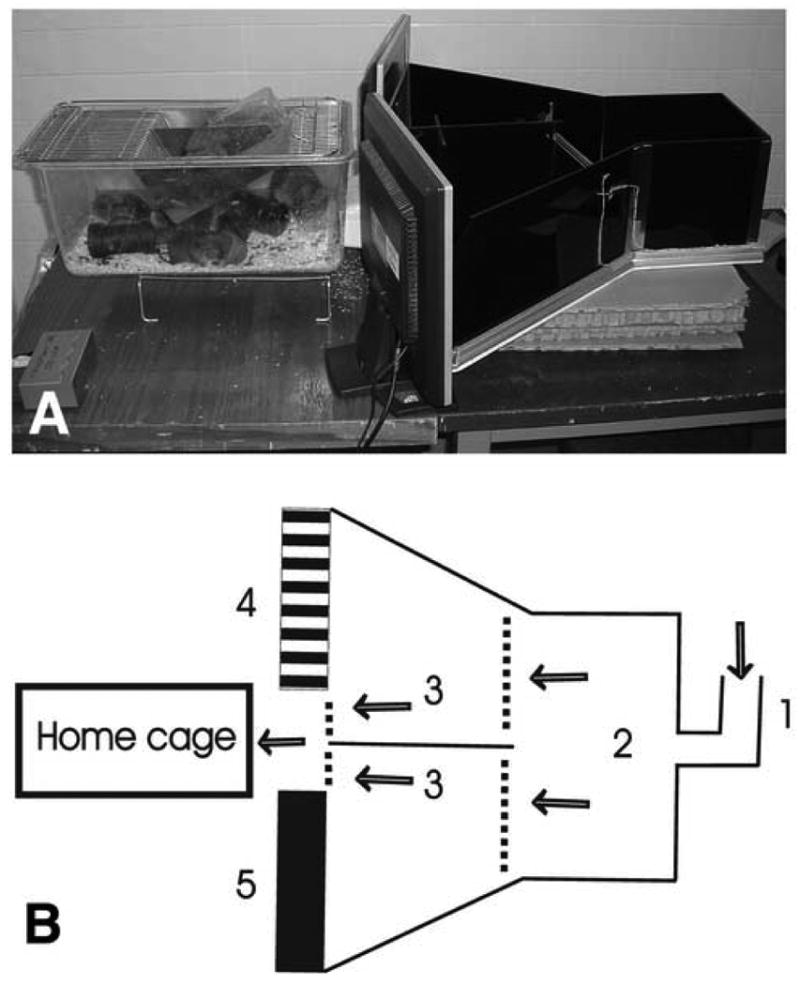Fig. 1.

(A) Photograph from the side of the visual discrimination apparatus showing the chambers, computer monitors and the home cage. (B) Visual discrimination apparatus-schematic drawing. Rats are introduced through a bend tube (1) that leads to the introduction chamber (2) from where the rats can move into one of the two escape alleys (3) by passing the transparent swing doors (dotted lines). At the far end of the escape alleys, a second set of swing doors are present which open into the home cage. The rats are trained to find the unlocked exit door based on the ‘positive’ visual stimulus displayed on one of the computer monitors (4), whereas a ‘negative’ visual cue is displayed on the other side (5). The rats' pathway leading to the home cage is indicated by arrowheads.
